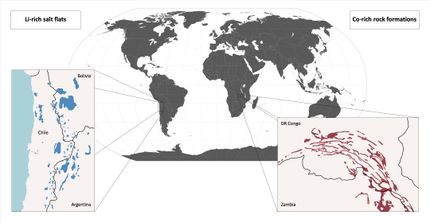Canadian research team reports major breakthrough in lithium battery technology
An NSERC-funded lab at the University Of Waterloo has laid the groundwork for a lithium battery that can store and deliver more than three times the power of conventional lithium ion batteries.
The research team of professor Linda Nazar, graduate student David Xiulei Ji and postdoctoral fellow Kyu Tae Lee are one of the first to demonstrate robust electrochemical performance for a lithium-sulphur battery. The finding is reported in the on-line issue of Nature Materials.
The prospect of lithium-sulphur batteries has tantalized chemists for two decades, and not just because successfully combining the two chemistries delivers much higher energy densities. Sulphur is cheaper than many other materials currently used in lithium batteries. It has always showed great promise as the ideal partner for a safe, low cost, long lasting rechargeable battery, exactly the kind of battery needed for energy storage and transportation in a low carbon emission energy economy.
"The difficult challenge was always the cathode, the part of the battery that stores and releases electrons in the charge and recharge cycles," said Dr. Nazar. "To enable a reversible electrochemical reaction at high current rates, the electrically-active sulphur needs to remain in the most intimate contact with a conductor, such as carbon."
The Canadian research team leap-frogged the performance of other carbon-sulphur combinations by tackling the contact issue at the nanoscale level. Although they say the same approach could be used with other materials, for their proof of concept study they chose a member of a highly structured and porous carbon family called mesoporous carbon. At the nanoscale level, this type of carbon has a very uniform pore diameter and pore volume.
Using a nanocasting method, the team assembled a structure of 6.5 nanometre thick carbon rods separated by empty three to four nanometre wide channels. Carbon microfibres spanning the empty channels kept the voids open and prevented collapse of the architecture.
Filling the tiny voids proved simple. Sulphur was heated and melted. Once in contact with the carbon, it was drawn or imbibed into the channels by capillary forces, where it solidified and shrunk to form sulphur nanofibres. Scanning electron microscope sections revealed that all the spaces were uniformly filled with sulphur, exposing an enormous surface area of the active element to carbon and driving the exceptional test results of the new battery.
"This composite material can supply up to nearly 80 percent of the theoretical capacity of sulphur, which is three times the energy density of lithium transition metal oxide cathodes, at reasonable rates with good cycling stability," said Dr. Nazar.
What is more, the researchers say, the high capacity of the carbon to incorporate active material opens the door for similar "imbibed" composites that could have applications in many areas of materials science.
The research team continues to study the material to work out remaining challenges and refine the cathode's architecture and performance.
Dr. Nazar said a patent has been filed, and she is reviewing options for commercialization and practical applications.
Other news from the department science
These products might interest you
Most read news
More news from our other portals
See the theme worlds for related content
Topic World Battery Technology
The topic world Battery Technology combines relevant knowledge in a unique way. Here you will find everything about suppliers and their products, webinars, white papers, catalogs and brochures.

Topic World Battery Technology
The topic world Battery Technology combines relevant knowledge in a unique way. Here you will find everything about suppliers and their products, webinars, white papers, catalogs and brochures.





























































